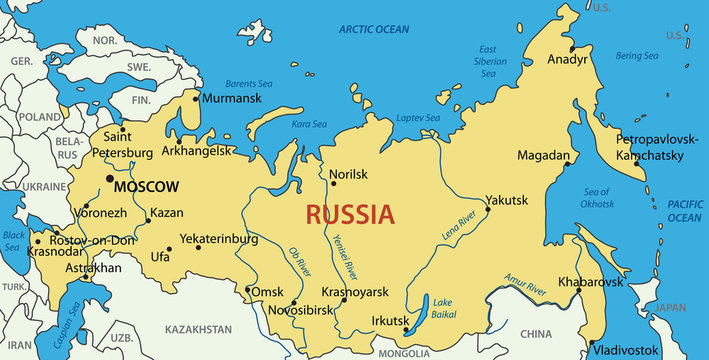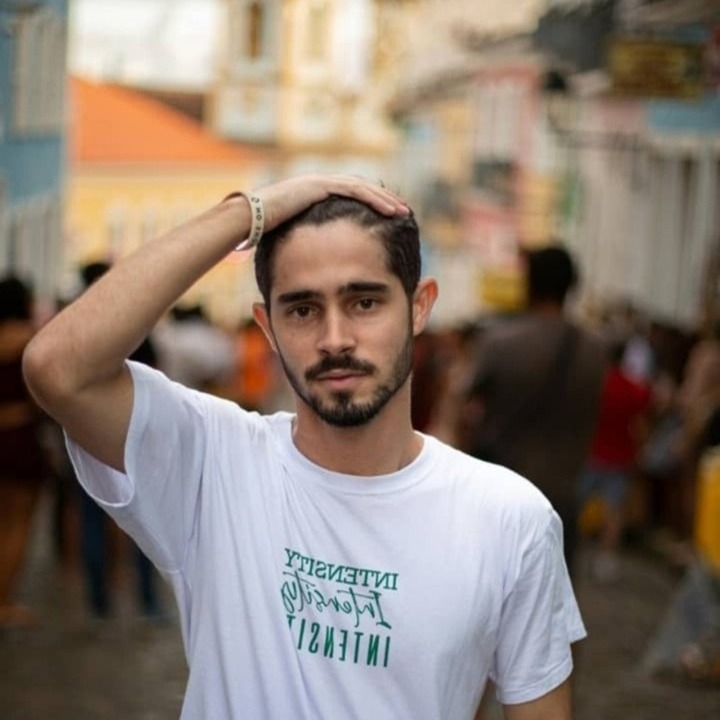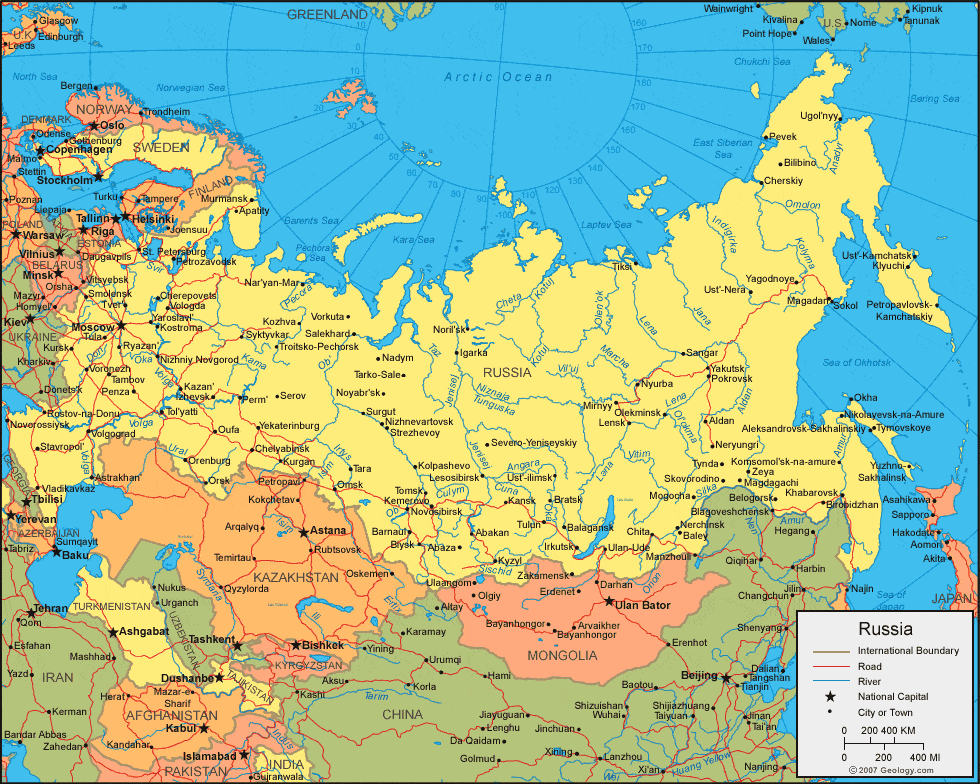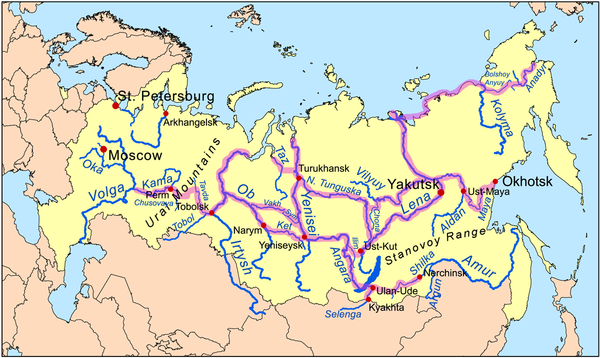Map Of Russia - Learn About Its Geography, Culture, And Regions
Get a clearer view of Russia with our interactive map. Learn about its regions, major cities, and diverse landscapes all in one place.
Author:Finn WildeReviewer:Michael RachalDec 26, 202430.5K Shares535.9K Views

Russia is a massive country, stretching across two continents, filled with different landscapes, cultures, and histories. From the frozen Siberian tundra to the lively city life of Moscow, looking at a map of Russiahelps us understand more about its size and importance. Covering over 17 million square kilometers, Russia's map is not just for getting around, but also for appreciating its vast and diverse nature.
Quick Facts About Russia
- Total Area: 17.1 million square kilometers
- Capital: Moscow
- Population: Approximately 146 million (2023)
- Official Language: Russian
- Currency: Russian Ruble (RUB)
- Dialing Code: +7
- Flag: Three horizontal stripes (white, blue, red)
- Borders: Shares borders with 16 countries, including China, Kazakhstan, and Ukraine.
- Time Zones: 11 time zones across Russia.
- National Parks: Over 40 national parks, including Lake Baikal and Kamchatka.
Geographical Overview Of Russia’s Map
Russia’s sheer size makes it an awe-inspiring subject of study. Covering 17.1 million square kilometers, it is larger than the next 10 biggest countries combined. Located in both Europe and Asia, it spans from the Arctic Ocean in the north to the Pacific Ocean in the east, and from the Baltic Sea in the west to the Pacific Ocean in the east.
Russia is a land of extremes: endless frozen tundras, majestic mountain ranges, vast plains, and some of the world’s largest forests. Russian dessertsare also a notable part of its rich cultural heritage, offering a sweet contrast to the country's rugged landscapes and providing a glimpse into its diverse culinary traditions.
Key Geographic Features
- Ural Mountains: The Ural Mountains form a natural division between European Russia and Asian Russia.
- Siberian Plains: This region, stretching from the Urals to the Pacific Ocean, is known for its cold climate and vast, remote landscapes.
- Lake Baikal: Located in Siberia, Lake Baikal is the world’s deepest and oldest freshwater lake.
- Caucasus Mountains: These mountains in the southern part of Russia mark the border with Georgia and Armenia.
- Volga River: The longest river in Europe, it runs through central Russia and is vital for both trade and agriculture.
Map Of Russia’s Cities
1. Moscow
Moscow, the capital of Russia, is the largest city in the country and a major global city. It is Russia's political, economic, cultural, and scientific center, housing the Kremlin, Red Square, and numerous historic landmarks. Moscow is a bustling metropolis, known for its impressive architecture, including the iconic St. Basil’s Cathedral, and its vibrant arts scene. The city is a key hub for transportation, finance, and trade, with one of the largest metro systems in the world.
2. St. Petersburg
St. Petersburg, often referred to as Russia's cultural capital, is known for its stunning architecture, art museums, and rich history. Founded by Peter the Great in 1703, it served as the Russian Empire’s capital for more than 200 years. Major attractions include the Hermitage Museum, the Winter Palace, and the city's elegant canals, which have earned it the nickname "Venice of the North." St.
3. Novosibirsk
Novosibirsk, located in southwestern Siberia, is the third-largest city in Russia and the largest in Siberia. It serves as an industrial, cultural, and scientific center of the region. Novosibirsk is known for its research institutions, including the Siberian Branch of the Russian Academy of Sciences, and its thriving industries such as machine building and electronics. The city's location along the Trans-Siberian Railway makes it a crucial transportation hub for trade and commerce across Russia.
4. Yekaterinburg
Yekaterinburg is the administrative center of the Sverdlovsk Oblast and the Ural Federal District, located at the foot of the Ural Mountains. It is one of Russia’s major industrial cities, with a focus on manufacturing, energy, and metallurgy. Yekaterinburg also has significant cultural importance, serving as an important cultural center for the Ural region. The city is known for its historical landmarks, such as the Church on the Blood, which commemorates the Romanov family’s tragic death.
5. Nizhny Novgorod
Nizhny Novgorod, located on the Volga River, is an important cultural and economic city in Russia. It is known for its historical significance, especially during the Soviet era when it was a closed military city. Nizhny Novgorod is home to a number of historic landmarks, including the Nizhny Novgorod Kremlin and the Chkalov Stairs. The city is a center for trade, with a strategic location on the Volga River that allows for easy access to other parts of Russia and beyond.
6. Kazan
Kazan, the capital of the Republic of Tatarstan, is a city with a rich cultural heritage, blending Russian and Tatar influences. It is one of Russia’s most important cities, with a history that dates back over 1,000 years. Kazan is known for its impressive architecture, such as the Kazan Kremlin, a UNESCO World Heritage site, and the Kul Sharif Mosque. The city is also a major industrial and educational center, with a thriving economy based on petroleum, machinery, and chemicals.
7. Samara
Samara is a major city located on the Volga River in southwestern Russia. It is known for its aerospace industry, as it is a key center for aircraft manufacturing and space exploration. The city’s economy is diverse, with sectors such as energy, chemicals, and machinery contributing to its growth. Samara is also an important cultural center, with a variety of theaters, museums, and cultural institutions.
8. Omsk
Omsk is an important city in southwestern Siberia, located along the Irtysh River. It is one of the largest cities in Russia’s Siberian region and a major industrial hub. Omsk has a significant role in Russia’s oil and gas industry, with several refineries and manufacturing plants located in the city. It is also a key transportation center, with connections to other parts of Russia through rail and air.
9. Vladivostok
Vladivostok, located on the Pacific Ocean in Russia’s Far East, is one of the country’s most important port cities and a key center for trade with Asia. The city is the administrative center of the Primorsky Krai and serves as the home of Russia’s Pacific Fleet. Vladivostok has a rich history as a port city and has undergone significant development in recent years, with an expanding economy based on shipping, fisheries, and energy.
10. Rostov-on-Don
Rostov-on-Don is a significant port city located on the Don River in southern Russia. It serves as a major industrial and cultural center for the Southern Federal District. Rostov-on-Don is important for the country’s transportation system, with a large railway hub and an international airport. The city’s economy is based on agriculture, shipping, and manufacturing, with key industries including food processing and machinery.
11. Chelyabinsk
Chelyabinsk is located in the southern Ural Mountains and is a major industrial city known for its steel and heavy machinery manufacturing. The city has played an important role in Russia’s defense industry, particularly during the Soviet era, and remains a key industrial hub. Chelyabinsk is an important transportation center, with extensive rail and road links connecting it to other parts of Russia.
12. Krasnoyarsk
Krasnoyarsk is a major city located on the Yenisei River in Siberia, known for its rich natural resources and growing industries. The city is a key center for metallurgy, energy, and manufacturing, with a strong focus on aluminum production. Krasnoyarsk is also home to one of Russia’s largest hydroelectric power stations, the Krasnoyarsk Dam.
13. Ufa
Ufa, the capital of the Republic of Bashkortostan, is a major city located at the intersection of the Volga River and the Ural Mountains. The city is known for its significant role in Russia’s oil and gas industry, with numerous refineries and chemical plants. Ufa is also an important cultural and educational center, with a strong tradition in music and theater.
14. Irkutsk
Irkutsk, located near Lake Baikal in Siberia, is one of Russia’s oldest and most historic cities. It serves as a key administrative and cultural center for the Irkutsk Oblast. Irkutsk is known for its well-preserved Russian architecture, including charming wooden houses, and its proximity to Lake Baikal, which is a UNESCO World Heritage site. The city is a popular starting point for tourists visiting the lake, and it plays a significant role in the region’s economy, with industries such as energy, mining, and manufacturing.
Population Of Russia
As of 2023, Russia's population is approximately 146 million, making it the ninth-most populous country in the world. The population density varies significantly, with the majority concentrated in the European part of Russia. Major urban centers like Moscow and St. Petersburg house millions of people, while vast regions of Siberia remain sparsely populated due to harsh climatic conditions.
The map of Russia clearly shows these population trends, with dense clusters around the Volga River, Moscow, and the western part of the country, contrasting with the emptiness of the northern tundra and Siberian wilderness.
Regions On The Map Of Russia
1. Central Federal District
The Central Federal District is the most important and populous region of Russia, home to the capital, Moscow, which serves as the country’s political, economic, and cultural hub. This district includes several key cities, such as Tula, Kaluga, and Ryazan, and is the center of Russia’s industrial, financial, and governmental activities.
2. Northwestern Federal District
The Northwestern Federal District includes Russia's major port city, St. Petersburg, and stretches along the Baltic Sea. This district is known for its beautiful landscapes, historical sites, and its strategic position as a gateway to Europe. Key cities like Veliky Novgorod, Pskov, and Murmansk are part of the district, which is important for Russia's shipping, trade, and defense.
3. Southern Federal District
The Southern Federal District borders the Black Sea and Caspian Sea, making it an essential region for Russia’s agricultural and trade activities. Major cities in this district include Rostov-on-Don, Krasnodar, and Volgograd. The region is known for its fertile soils and agricultural output, particularly in grains, fruits, and vegetables. The Southern Federal District also has significant tourism potential, with cities like Sochi attracting visitors due to their warm climates and coastal resorts.
4. North Caucasian Federal District
Located in the southern part of Russia, the North Caucasian Federal District is home to a culturally diverse population and includes regions such as Dagestan, Chechnya, and Kabardino-Balkaria. The district is geographically marked by the Caucasus Mountains and is rich in natural resources. It is also an important area for tourism, particularly for hiking, skiing, and exploring the natural beauty of the Caucasus.
5. Volga Federal District
The Volga Federal District, named after the Volga River, is a key region for Russia's industry and agriculture. Major cities include Kazan, Samara, and Nizhny Novgorod, which are central to the country’s oil, gas, and manufacturing industries. The region is vital for Russia’s transport and trade, with the Volga River being one of the most important waterways in the country.
6. Ural Federal District
The Ural Federal District is located in the heart of Russia, spanning the Ural Mountains that divide Europe and Asia. The region is rich in natural resources, particularly minerals and metals, making it an industrial powerhouse. Major cities in the district include Yekaterinburg, Chelyabinsk, and Perm, all of which are centers for manufacturing, mining, and technology.
7. Siberian Federal District
Siberia, known for its vast and rugged terrain, makes up the Siberian Federal District, which covers much of northern and central Asia. This region is known for its extreme climates, with harsh winters and vast wilderness areas. Key cities include Novosibirsk, Omsk, and Krasnoyarsk. Siberia is rich in natural resources such as coal, oil, and timber and plays a vital role in Russia’s energy sector.
8. Far Eastern Federal District
The Far Eastern Federal District covers Russia’s easternmost territories, including the Kamchatka Peninsula, Sakhalin Island, and parts of the Russian Arctic. This district is strategically located along the Pacific Ocean and serves as a gateway for trade with countries like Japan, China, and the United States. Major cities in the region include Vladivostok and Khabarovsk.
9. Privolzhsky Federal District
The Privolzhsky Federal District is located in central Russia and includes cities such as Kazan, Nizhny Novgorod, and Samara. The region is a major hub for transportation, agriculture, and industry, with the Volga River serving as a vital trade route. Kazan, the capital of Tatarstan, is known for its historical and cultural significance, and the district is an economic powerhouse, with industries ranging from oil production to machinery and electronics.
10 Central Black Earth Federal District
The Central Black Earth Federal District, often referred to as the "breadbasket" of Russia, is located in the southwestern part of the country and is known for its fertile black soil, which is ideal for agriculture. Key cities include Voronezh, Belgorod, and Lipetsk. This region is a major producer of grain, particularly wheat, and has a thriving agricultural industry.
11. Kaliningrad Oblast
Kaliningrad Oblast is a unique region in Russia, as it is located on the Baltic Sea and separated from the main part of the country. This enclave is bordered by Lithuania and Poland and is strategically important for Russia due to its access to the sea. The region's capital, Kaliningrad, is an important port city with a rich history, having been part of Germany (as Königsberg) before World War II. Today, Kaliningrad is a center for trade, culture, and tourism, and it serves as a gateway to Europe for Russia.
Total Area On The Map Of Russia
Russia covers an extraordinary 17.1 million square kilometers, making it the largest country in the world. This vast expanse spans multiple time zones and climatic zones, with regions experiencing subarctic to temperate climates. From the arctic coastline in the north to the steppes in the south, Russia’s sheer size is one of the most striking features on any world map.
Capital Of Russia - Moscow
Moscow, the capital of Russia, is a global powerhouse and the most important city in the country. Situated on the Moskva River, the city is home to Russia's government, major cultural institutions, and a thriving economy. Moscow is one of the most populous cities in Europe and serves as the political, economic, and cultural center of the country.
On the map, Moscow is centrally located in European Russia, with significant transportation routes extending from the city across the nation. Budget travel destinationsin and around Moscow offer a chance to explore the city's rich history and vibrant culture without breaking the bank, making it an appealing stop for travelers on a budget.
Types Of Maps Of Russia
Several types of maps represent Russia’s geography, each serving a different purpose:
- Political Maps: Show the divisions of Russia into regions and cities.
- Topographic Maps: Depict natural landforms like mountains, rivers, and valleys, as well as elevation and terrain.
- Physical Maps: Focus on geographical features like forests, lakes, and deserts.
- Historical Maps: Represent Russia at different points in time, often showing past borders or political shifts.
Digital And Interactive Maps Of Russia
In today’s digital age, numerous platforms provide interactive maps of Russia. These maps allow users to explore the country virtually, zooming into cities, landmarks, and regional boundaries. Some of the most popular digital map tools include:
- Google Maps: Offers an interactive map of Russia with satellite imagery and street views of major cities.
- Russian Geographic Information System: A government-supported tool for more detailed geographic analysis.
- Mapillary: Provides street-level imagery, helping travelers and researchers explore Russia from the comfort of their homes.
National Parks In Russia
Russia is home to some of the world’s most beautiful and remote natural landscapes, many of which are preserved in national parks. The following are just a few of Russia's most famous national parks:
- Lake Baikal National Park: Located around the world’s deepest lake, this park is a UNESCO World Heritage site.
- Kamchatka Nature Reserve: Known for its volcanic landscapes and diverse wildlife, including brown bears.
- Sochi National Park: Famous for its subtropical climate, Sochi is a popular destination for outdoor activities, including skiing and hiking.
Tip:These parks are crucial not only for the preservation of wildlife but also for the understanding of Russia’s diverse ecological zones.
Major Routes And Highways In Russia
1. The Trans-Siberian Highway (M-56)
The Trans-Siberian Highway is one of the longest and most important road routes in Russia, stretching from Moscow in the west to Vladivostok on the Pacific coast. This extensive highway network is crucial for connecting cities, towns, and remote regions across Siberia, facilitating both domestic and international trade.
The route spans approximately 11,000 kilometers and passes through a range of terrains, including vast forests, mountains, and plains. For those looking to experience the magic of Russia in its quieter, cooler months, some of the best places to travel in Novemberalong the highway offer a stunning winter wonderland, perfect for those seeking a more off-the-beaten-path adventure.
2. The Moscow-Saint Petersburg Road (M-10)
The M-10 is a major highway connecting Moscow and St. Petersburg, two of Russia’s most important cultural and economic hubs. Spanning around 700 kilometers, this route is one of the busiest and most vital in the country, with millions of travelers using it annually. The highway passes through key cities and towns, offering easy access to both Russia’s capital and its cultural capital, St. Petersburg. As a result, it is an essential route for both tourism and commerce, connecting two of the most iconic cities in Russia.
3. The North Caucasus Highway (M-29)
The M-29 is a key highway that runs through Russia’s southern regions, connecting the North Caucasus with central Russia. This route is especially important for trade and transportation in the Caucasus region and provides access to cities like Rostov-on-Don, Krasnodar, and Sochi. The highway also serves as a gateway to the mountainous regions and resorts of the Caucasus, making it an essential road for both domestic traveland tourism.
4. The Siberian Expressway (M-53)
The Siberian Expressway (M-53) is a key route that connects the cities of Novosibirsk and Omsk in southwestern Siberia. Running across the vast Russian steppes, the M-53 plays a critical role in linking the Russian heartland with the regions of Siberia, supporting both regional and national trade. The highway is essential for transporting goods and people across one of Russia’s most economically significant areas.
5. The Volga Highway (M-7)
The M-7 is one of Russia’s most important east-west highways, running from Moscow to Kazan and continuing toward the Ural region. This route follows the course of the Volga River for much of its length and is central to both transportation and trade in central Russia. The M-7 connects key regional centers such as Nizhny Novgorod and Ulyanovsk, making it vital for travelers and businesses.
6. The Ural Highway (M-5)
The M-5, also known as the Ural Highway, connects Moscow with the Ural Mountains region, running through major cities such as Tolyatti, Samara, and Chelyabinsk. This route is crucial for trade and industry, as it links Russia’s industrial heartland with the capital. The highway plays a major role in the transportation of goods, particularly in sectors such as heavy manufacturing, oil, and chemicals.
7. The Kolyma Highway (R504)
The Kolyma Highway, often referred to as the "Road of Bones," is one of the most infamous and remote roads in Russia. Located in the Russian Far East, the R504 connects Magadan to Yakutsk and is known for its harsh conditions and historical significance. Constructed during the Stalin era using forced labor, the highway is notorious for the extreme challenges it poses to travelers, including long stretches of isolated wilderness and severe weather.
8. The Caspian Sea Coast Highway (M-39)
The M-39 is an important road that runs along Russia's Caspian Sea coast, linking the regions of Astrakhan and Makhachkala in the south. This coastal highway connects Russia’s southern areas with neighboring countries such as Kazakhstan and Azerbaijan, facilitating both domestic and international trade. The route is particularly significant for industries such as oil, gas, and agriculture, as the Caspian Sea is a crucial area for energy production and export.
9. The Arctic Highway (R-20)
The R-20 is one of the northernmost highways in Russia, running along the Arctic Circle from Murmansk to the Kola Peninsula. This route is critical for accessing Russia’s Arctic regions, which are rich in natural resources, including minerals, oil, and gas. The Arctic Highway also serves as an important transportation link for the Russian military and scientific research stations in the Arctic.
Top Attractions On The Map Of Russia
1. The Kremlin And Red Square
Located in the heart of Moscow, the Kremlin and Red Square are two of the most iconic symbols of Russian power, history, and culture. The Kremlin, a fortified complex, has been the political and religious center of Russia for centuries. It houses the President's official residence and several significant historical sites, including cathedrals, palaces, and museums.
2. Lake Baikal
Lake Baikal, located in Siberia, is the world’s deepest and oldest freshwater lake, reaching depths of over 1,600 meters. This natural wonder is a UNESCO World Heritage site and attracts nature lovers, scientists, and outdoor enthusiasts from all over the world. The lake is known for its crystal-clear waters and unique biodiversity, with many species of plants and animals found nowhere else on Earth.
3. Hermitage Museum
Situated in St. Petersburg, the Hermitage Museum is one of the largest and most important art museums in the world. Founded in 1764 by Catherine the Great, it houses a vast collection of over 3 million items, including paintings, sculptures, antiquities, and decorative arts. The museum’s main complex, housed in the Winter Palace, is a stunning example of Baroque architecture and offers a glimpse into Russia's imperial history.
Dialing Code Of Russia
Russia’s international dialing code is +7. This is essential for anyone seeking to communicate with Russia from abroad. The dialing code can be seen on any world map indicating international telephone systems.
Currency Of Russia
The official currency of Russia is the Russian Ruble (RUB). The ruble is symbolized by the ₽ sign and is represented on maps showing economic regions and trade routes. Its value fluctuates, influenced by Russia’s complex economic and geopolitical landscape.
Flag Of Russia
Russia’s flag consists of three horizontal stripes: white at the top, blue in the middle, and red at the bottom. It is a symbol of unity and historical significance, and the flag is visible on maps to denote Russia's national sovereignty and identity.
10 Interesting Facts About Russia
- Russia spans 11 time zones.
- It has two of the world’s largest freshwater lakes: Lake Baikal and Ladoga Lake.
- Russia has more than 40,000 rivers.
- The Siberian Tigeris one of the rarest animals in the world.
- Russia’s Trans-Siberian Railwayis the longest railway in the world.
- Kamchatkahas 29 active volcanoes.
- Moscowis the coldest major city in the world, with winter temperatures reaching - 20°C.
- The Volga Riveris Europe’s longest river.
- The Ural Mountainsmark the natural boundary between Europe and Asia.
- Russia is home to over 100 different ethnic groups.
FAQs
What Makes Russia’s Map Unique?
Russia’s map is unique due to the country’s immense size, spanning over 17 million square kilometers, and its presence on two continents Europe and Asia. The vast variety of terrains, from snowy tundras in the north to the mountainous regions in the south, makes the map incredibly diverse and complex. Russia also spans 11 time zones, further emphasizing its size and diversity.
What Are The Major Cities Shown On Russia's Map?
Some of the most significant cities on Russia’s map include Moscow, the capital, and St. Petersburg, the cultural center. Other key cities include Novosibirsk, Yekaterinburg, and Vladivostok, each important for trade, culture, or industry.
How Many Regions Are On Russia’s Map?
Russia consists of 85 federal subjects, including oblasts, krais, republics, autonomous areas, and more. These regions are represented on political maps of Russia, with each area having its own government and some with distinct cultural identities.
What Are Some Key Geographical Features On The Map Of Russia?
Russia is known for its extreme geographical features, such as the Ural Mountains, which separate Europe from Asia, and Lake Baikal, the deepest freshwater lake in the world.
What Is The Significance Of The Trans-Siberian Railway On Russia’s Map?
The Trans-Siberian Railway is one of the longest railways in the world, stretching from Moscow to Vladivostok on the Pacific Ocean. It plays a crucial role in connecting Russia’s cities and regions, particularly across the vast expanse of Siberia.
Conclusion
Russia’s map isn’t just a picture of land, it tells the story of a country with huge variety in both geography and culture. From busy cities to remote wilderness areas, the map shows how large and diverse Russia truly is. Understanding its geography is an essential part of seeing the country’s influence and place in the world.
Jump to
Quick Facts About Russia
Geographical Overview Of Russia’s Map
Map Of Russia’s Cities
Population Of Russia
Regions On The Map Of Russia
Total Area On The Map Of Russia
Capital Of Russia - Moscow
Types Of Maps Of Russia
Digital And Interactive Maps Of Russia
National Parks In Russia
Major Routes And Highways In Russia
Top Attractions On The Map Of Russia
Dialing Code Of Russia
Currency Of Russia
Flag Of Russia
10 Interesting Facts About Russia
FAQs
Conclusion

Finn Wilde
Author
For Finn Wilde, the wilderness is more than just a destination - it’s a way of life. Over the past decade, he has led multiple expeditions in some of the world’s most remote regions, from the icy fjords of Greenland to the rugged trails of Patagonia.
Finn emphasizes sustainability in all of his adventures, helping participants connect with nature while promoting responsible exploration. His expeditions inspire individuals to explore the great outdoors while fostering a deep respect for the environment.

Michael Rachal
Reviewer
Michael Rachal believes that luxury lies in the details. With over 20 years of experience in the luxury travel industry, he has crafted hundreds of bespoke itineraries for clients seeking personalized, unforgettable experiences.
Whether guiding clients through private cultural tours or curating culinary journeys with world-renowned chefs, Michael ensures that each trip is tailored to perfection.
His ability to anticipate needs and exceed expectations has earned him a reputation as a leading expert in luxury travel.
Latest Articles
Popular Articles


